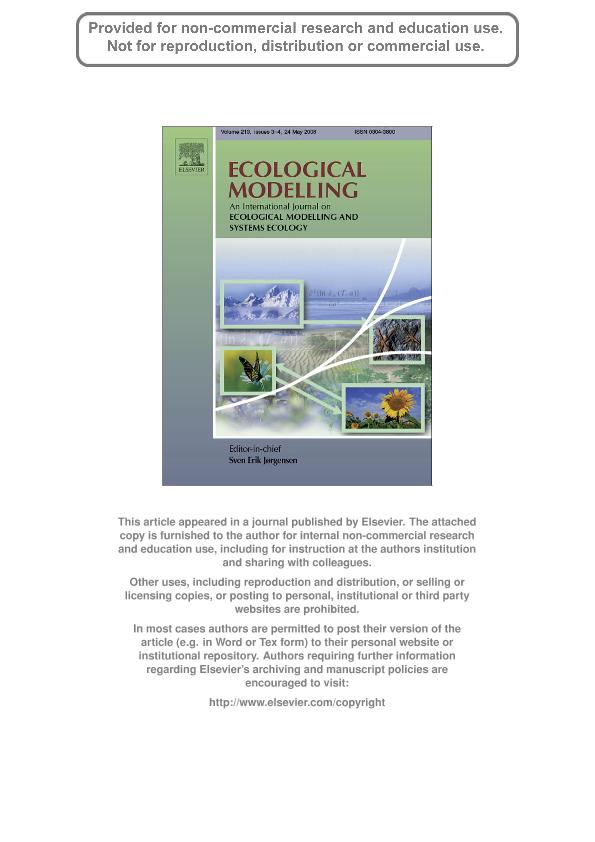Artículo
An area-wide model approach for the management of a disease vector planthopper in an extensive agricultural system
Fecha de publicación:
05/2008
Editorial:
Elsevier Science
Revista:
Ecological Modelling
ISSN:
0304-3800
Idioma:
Inglés
Tipo de recurso:
Artículo publicado
Clasificación temática:
Resumen
The "Mal de Río Cuarto" disease in maize is a viral disease caused by a reovirus (MRCV) and transmitted by the delphacid planthopper Delphacodes kuscheli Fennah in a persistent manner. Although the disease is endemic in only one provincial department, when regional outbreaks occur the losses in maize production are very significant. Actively dispersing D. kuscheli individualswere collected from 15 sampling sites during the 1999 and 2000 spring seasons using sticky traps placed at 6m above ground level, designed to detect flying individuals. Insect host patches were surveyed using Landsat 5 TM images for the periods studied. Two critical landscape metrics, total class area and mean proximity index, were calculated using FRAGSTATS 3.3 on the winter pasture satellite images. Amultiple regression model showed the relationship between host patch area, mean proximity index and D. kuscheli abundance to be highly significant (R2 = 0.96, r = 0.98, P < 0.0001). Spatial simulations of different host areas and different interpatch separations were created in order to test the effect of these metrics on the abundance of the dispersing individuals. The estimate of the insect?s abundance showed that, although patch size is very important in determining mean insect abundance in an area, the separation of these patches is crucial to establish the effect of host patch area on the abundance of dispersing individuals. Until now, disease management consisted in modifying sowing dates in order to avoid maximum D. kuscheli abundances and thus minimize risk of Mal de R´ıo Cuarto Disease. Our results show that a rational area-wide management of host patches can keep
Palabras clave:
Disease Vector
,
Planhopper
,
Agricultural Pest
,
Landsat TM
Archivos asociados
Licencia
Identificadores
Colecciones
Articulos(IMBIV)
Articulos de INST.MULTIDISCIPL.DE BIOLOGIA VEGETAL (P)
Articulos de INST.MULTIDISCIPL.DE BIOLOGIA VEGETAL (P)
Citación
Grilli, Mariano Pablo; An area-wide model approach for the management of a disease vector planthopper in an extensive agricultural system; Elsevier Science; Ecological Modelling; 213; 3-4; 5-2008; 308-318
Compartir
Altmétricas




